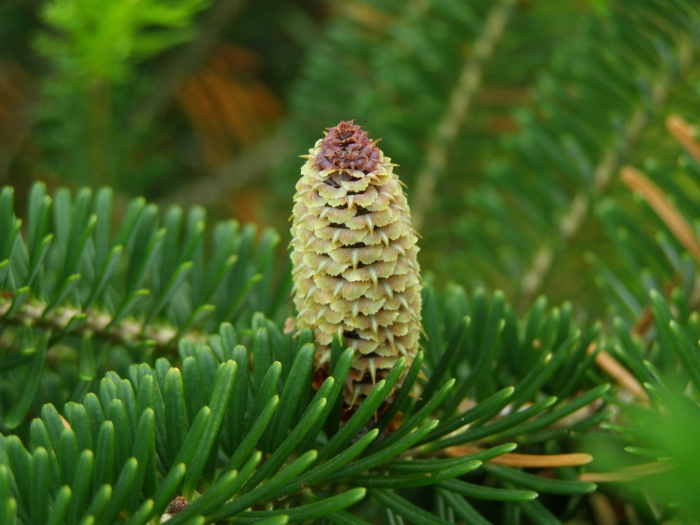Fraser Fir
(Abies fraseri)
Fraser Fir (Abies fraseri)
/
/

Teresa Sikora
CC BY-SA 3.0













































































Estimated Native Range
Summary
The Fraser Fir is valued for its dense, pyramidal form, strong limbs, and long-retained, soft needles that are a dark blue-green color. Its pleasant scent and excellent needle retention make it a preferred choice as a Christmas tree. In cultivation, it is used for holiday decor and in cool, moist regions as an ornamental tree. It requires full sun to part shade, medium water, and well-drained, acidic soil. While it is relatively low-maintenance, it can be susceptible to pests such as the balsam woolly adelgid, which can cause significant damage.CC BY-SA 4.0
Plant Description
- Plant Type: Tree
- Height: 30-55 feet
- Width: 10-25 feet
- Growth Rate: Moderate
- Flower Color: N/A
- Flowering Season: Non-Flowering
- Leaf Retention: Evergreen
Growth Requirements
- Sun: Full Sun, Part Shade
- Water: Medium
- Drainage: Fast, Medium
Common Uses
Bank Stabilization, Bird Garden, Deer Resistant, Fragrant, Low Maintenance, Rabbit Resistant, Rock Garden
Natural Habitat
Higher elevations and cool, moist, acidic soils of the southern Appalachian Mountains in spruce-fir forests
Other Names
Common Names: Fraser Balsam Fir , Fraser’s Fir , She-Balsam , Southern Balsam Fir , Southern Fir , Frasers Balsam-Tanne , Frasers Tanne , Sapin De Fraser , Cseroki Jegenyefenyo , Abete Di Fraser , Virginiagran
Scientific Names: Abies fraseri , Abies fraseri f. prostrata , Abies humilis , Abies balsamea subsp. fraseri , Abies balsamea var. fraseri , Abies fraseri f. fraseri , Abies fraseri var. prostrata , Picea balsamea var. fraseri , Picea fraseri , Picea hudsonia , Pinus balsamea var. fraseri
GBIF Accepted Name: Abies fraseri (Pursh) Poir.